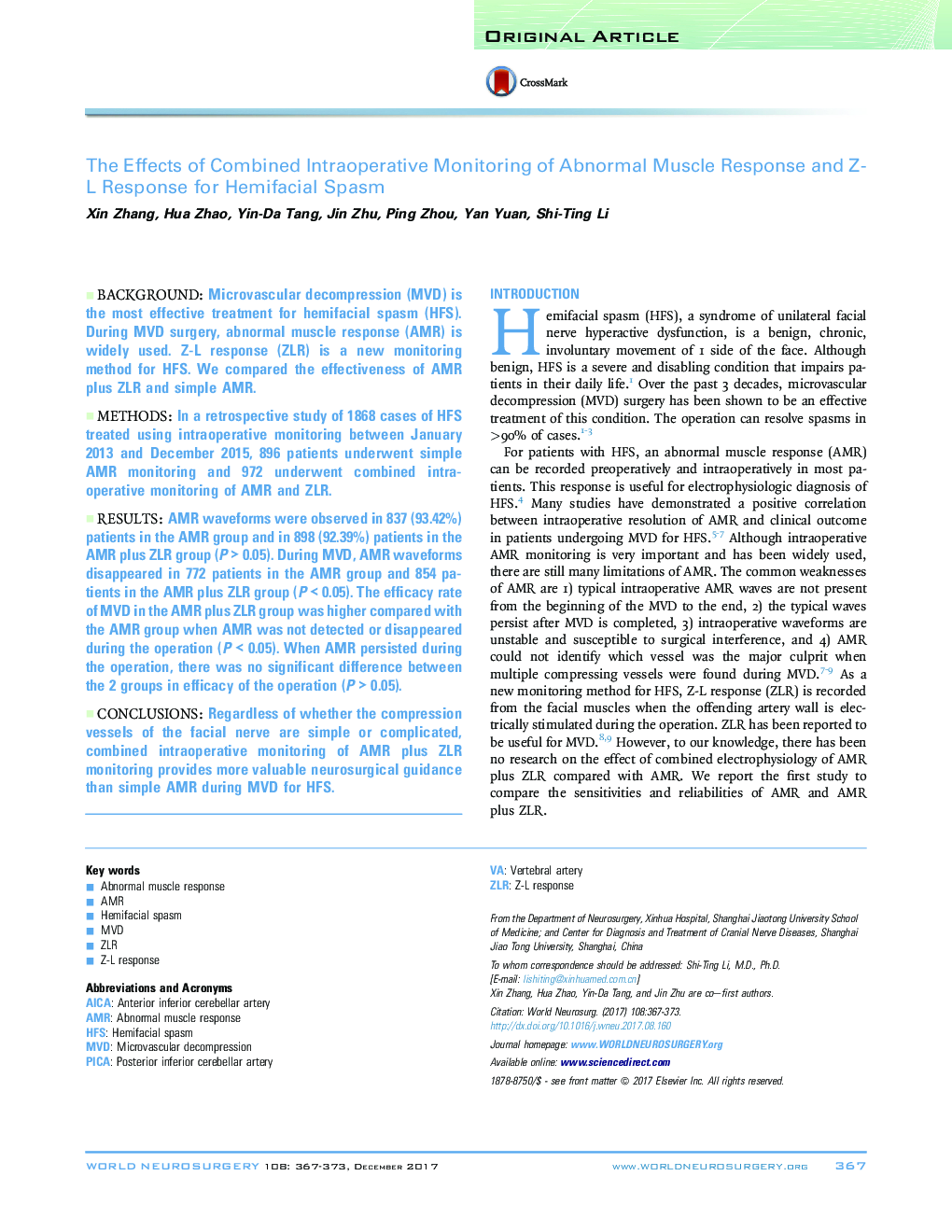| کد مقاله | کد نشریه | سال انتشار | مقاله انگلیسی | نسخه تمام متن |
|---|---|---|---|---|
| 5633784 | 1581447 | 2017 | 7 صفحه PDF | دانلود رایگان |

BackgroundMicrovascular decompression (MVD) is the most effective treatment for hemifacial spasm (HFS). During MVD surgery, abnormal muscle response (AMR) is widely used. Z-L response (ZLR) is a new monitoring method for HFS. We compared the effectiveness of AMR plus ZLR and simple AMR.MethodsIn a retrospective study of 1868 cases of HFS treated using intraoperative monitoring between January 2013 and December 2015, 896 patients underwent simple AMR monitoring and 972 underwent combined intraoperative monitoring of AMR and ZLR.ResultsAMR waveforms were observed in 837 (93.42%) patients in the AMR group and in 898 (92.39%) patients in the AMR plus ZLR group (P > 0.05). During MVD, AMR waveforms disappeared in 772 patients in the AMR group and 854 patients in the AMR plus ZLR group (P < 0.05). The efficacy rate of MVD in the AMR plus ZLR group was higher compared with the AMR group when AMR was not detected or disappeared during the operation (P < 0.05). When AMR persisted during the operation, there was no significant difference between the 2 groups in efficacy of the operation (P > 0.05).ConclusionsRegardless of whether the compression vessels of the facial nerve are simple or complicated, combined intraoperative monitoring of AMR plus ZLR monitoring provides more valuable neurosurgical guidance than simple AMR during MVD for HFS.
Journal: World Neurosurgery - Volume 108, December 2017, Pages 367-373